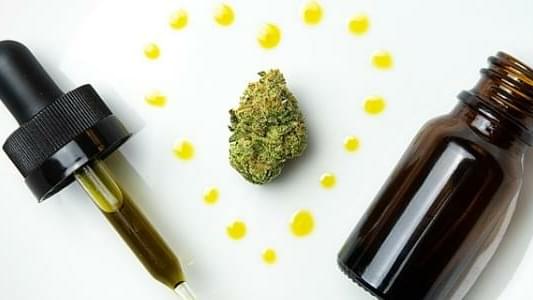
What are Cannabis Tinctures and How to Make Them
Published on 8/8/19
There are plenty of possibilities when it comes to enjoying the medicinal and recreational benefits of weed but a cannabis tincture might be the easiest way to manage the precise intake of your favorite green product. By definition, tinctures are concentrated liquid herbal extracts made by using alcohol to remove the active cannabinoids from the plant matter. Cannabis tinctures are simply concentrated cannabis in liquid form.
The process of making tinctures has been around for centuries. Once the ancient Egyptians began to distill alcohol and use it to preserve plants, the creation of plant-based medicine began to develop. Prior to the 1930s when the U.S. Government made the decision that the cannabis plant was dangerous, doctors across the country routinely used weed tinctures to treat all sorts of maladies. Before the development of aspirin, they were one of the most popular forms of pain relief available to the public. A drop or two under the tongue was often prescribed for anything from nausea, gout, menstrual cramps and muscle spams to chronic pain, cholera and appetite loss. Cannabis tinctures were also available for over-the-counter purchase at most pharmacies.

A marijuana tincture is an attractive alterative to other forms of cannabis ingestion for many reasons. It is absorbed under the tongue and has a rapid onset, unlike most edibles. Specifically, it is quickly absorbed into the arterial system and then speeds to the brain and the rest of the body. Once the user is comfortable with the strength of the tincture, the dosage amount can easily be controlled with the use of an eyedropper. Tinctures provide a healthy alternative to smoking because they do not require any combustion making them easy on the lungs as well.
You can also purchase or make weed tinctures that vary in concentrations of CBD and THC in accordance to your specific needs. Tinctures can be added to food or drink to enhance a meal and because tinctures use the entire plant, the "entourage effect" is always present. This means that everything in the plant (all of the therapeutic cannabinoids) is being utilized to provide a complete and more effective medical product. When using a tincture topically, it translates well. Some of those cannabinoids can be effective on bruises or certain types of skin conditions. Cannabis tinctures are also easy to store and can be preserved for a very long time. Just make sure your container is airtight and stored in a cool, dry place.
Are Cannabis Tinctures Right For You?

Tinctures can be a great way for people to enjoy the benefits of cannabis for recreational and/or medicinal use. On the medicinal side, tinctures can be essential for MMJ patients with ulcers, coeliac disease or general digestive issues that make edibles and inhalation either off-putting or not a viable option. Pulmonary problems can prevent patients from being able to smoke cannabis. Some people are too old or unwell to do anything physically demanding and a drop from an eyedropper might be the best way for their body to accept any form of marijuana.
Recreational users who employ tinctures can enjoy a high similar to smoking but without the long wait and uncertainty that sometimes accompanies edibles. They are discreet and the effects kick in quickly. There is obviously no smoke involved with cannabis tinctures, so a drop or two prior to enjoying a public event can allow marijuana users to enjoy the effects without bringing attention to themselves due to smoke or smell. The side effects of tinctures are minimal. In fact, they are akin to those sometimes associated with other forms of cannabis intake: drowsiness, dry mouth, etc.
How to Make Cannabis Tinctures

The quickest way to make a marijuana tincture is to use the Green Dragon Tincture Recipe. Also known as the Hot Method, this cannabis tincture recipe uses heat to accelerate the process. First, take an ounce of marijuana and chop or grind it into fine shake. Next, put it on a cookie sheet and place the sheet in the oven at 325 degrees. If you do not want the high associated with THC, omit this decarboxylation step. After about 10 minutes (or when the weed starts to smell strongly), remove the herb and put it in a Mason jar that contains a quart of high-proof alcohol. Leave the Mason jar open and place it in a pan with about two inches of water surrounding the jar. Bring the water to a boil and simmer until the temperature of the mixture hits 170 degrees - a basic cooking thermometer will give you a good reading. You will be dealing with alcohol fumes, so be sure to keep the cooking area well ventilated. Remove the jar from the hot water bath and set it aside to cool.
Once things cool off a bit, use cheesecloth to strain the THC tincture into a separate bowl to separate the plant matter from the liquid. After it has cooled completely, the tincture can be poured into a dark glass eyedropper for storage. The "Green Dragon" moniker stems from the color of the tincture. The alcohol hasextracted the terpenes, cannabinoids and other compounds from the marijuana to create a glorious green mixture. If you are not comfortable working with alcohol on the stove, the decarboxylated marijuana can be added to the alcohol in the jar, shaken vigorously a few times and placed in a cabinet to sit. After several weeks (shake the Mason jar daily) your tincture will be ready.
Do you use marijuana tinctures? If so, do you make your own or buy them from a dispensary? Feel free to take a moment to share your experience with cannabis tinctures in the comments section below.
